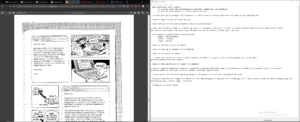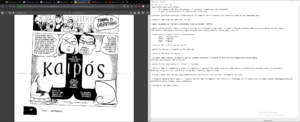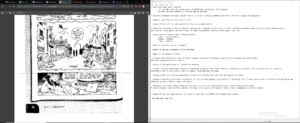Kevin’s Weekly Responses #1
After reading “Understanding Rhetoric: A Graphic Guide to Writing”, I have found a new meaning to rhetoric thanks for the authors Elizabeth Losh, Jonathan Alexander, Kevin Cannon, and Zander Cannon. When the authors initially introduced the idea of rhetoric, I perceived the connotation of rhetoric to be the kind that is involved in media and politics; no thanks to the recent political turmoil. In this way, I can relate the point that the authors make about rhetoric as being perceived as deception because when I first hear that word, I immediately think of the negative connotation of “rhetoric”. However, the comic quickly changed the meaning of rhetoric for me around page 11 when they introduced the parts that rhetoric can be broken up into and how its usage can be connected to social media. The way people nowadays post on social media is a strong reflection of the three fundamental ideas of rhetoric; ethos, pathos, and logos. In ethos, I have seen a lot of professionals who work for big companies who post pictures or videos that can compromise their work integrity and professional credibility just like how Jonathan in the comic is when he posts pictures of himself getting intoxicated. For pathos, there are more posts and videos than I can count that use texts and pictures to draw attention to themselves for likes, comments, or shares; this is more evident on Youtube. Lastly, there’s logos that accounts for statistical or facts that I have seen used in a positive and negative way. In logos’ positive side, you can use statistics or percentages that are true to prove a point, but on the negative side, you can use it to promote a negative connotation behind something. For example, using it in a positive way would be, “People who eat desserts are 75% happier than those who don’t, se we should eat dessert all the time”. In a negative way, it would be, “If you do not turn in your assignments, your grades will suffer”. Both sentences use logos, but it can be used to give off a positive or negative connotation. Overall, the way that the authors present how rhetoric is used in the 21st century in the age of electronics and social media is a good way to help readers and consumers of this era identify and learn that everything that we do is related to rhetoric from the basic ideas of ethos, pathos, and logos.





